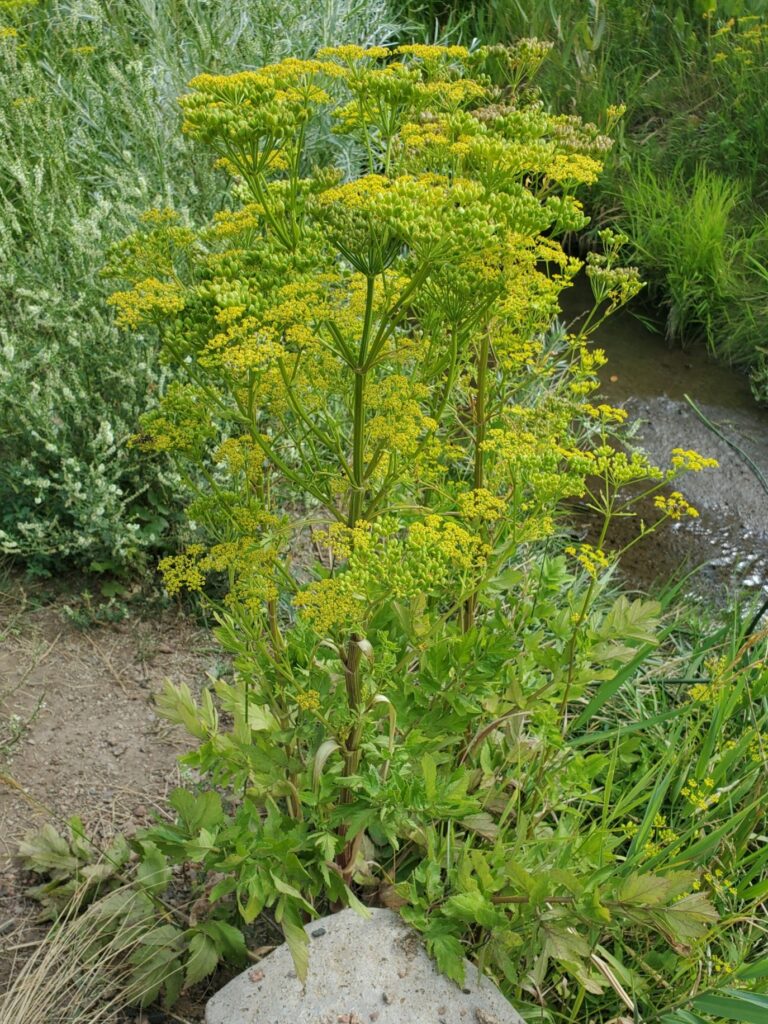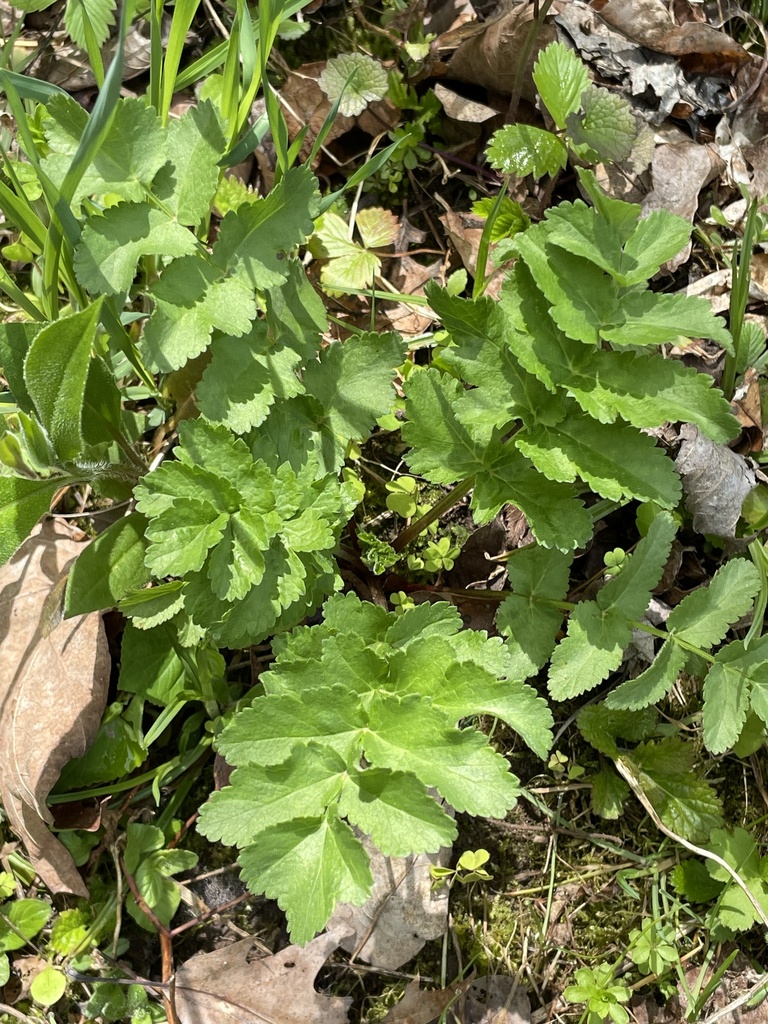Wild Parsnip is a tall herbaceous plant in the carrot/parsley family (Apiaceae) that can live for two or more years. When it flowers, it typically grows between 0.5 m and 1.5 m tall. It produces many small yellow flowers arranged in large umbrella-shaped clusters, known as an umbel inflorescence. The flower stem is green, hollow, and features noticeable deep grooves. The leaves grow alternately along the flower stem and are pinnately compound. The leaflets grow in pairs along the leaf stem and have distinct, jagged, saw-toothed edges.
Wild Parsnip is a monocarpic perennial, meaning it flowers once and then dies. In its early growth stages, Wild Parsnip forms a low rosette, with leaves spreading in a circular pattern close to the ground and has no flower stalk. The plant develops a thick, funnel-shaped taproot that stores energy and supports growth over multiple seasons.
Wild Parsnip prefers full sun but can also grow in partly shaded areas. It thrives in disturbed sites like roadsides, trails, ditches, beaches, shorelines, and railway embankments. In these areas, it often forms dense patches that crowd out native plants. It can also decrease the quality of forage crops for livestock and displace pollinator-friendly plants like goldenrods.
Its sap contains toxic chemicals called furanocoumarins, which pose a health risk to humans. If the sap contacts your skin and is exposed to sunlight, it can cause serious skin reactions, including rashes, burns, and blisters.
Wild parsnip is native to Europe and Asia and was introduced to North America by European settlers. It spreads solely through its seeds, which can remain viable in the soil for up to five years. These seeds can be dispersed by wind, water, animals, and human activities. Each plant can produce up to 1000 seeds.


Umbrella-shaped clusters of yellow flowers; pinnately compound leaves with toothed leaflets; deeply grooved stem.




Wild Parsnip is a close relative of carrots and was originally brought to North America specifically for its edible root!
Wild parsnip can be managed safely with the proper precautions. Its toxic sap can cause severe burns, so always wear waterproof gloves, long sleeves, pants, and eye protection when handling this species. Preventing seed development is a key strategy for managing Wild Parsnip. Please see the Wild Parsnip Best Management Practices document to learn about different management options. Always clean tools, equipment, and clothing after working in infested areas to prevent spread.
If you spot Wild parsnip, report it on iNaturalist or directly to the NSISC.